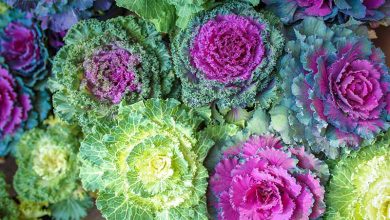How to grow Chayote in the garden: Planting, harvesting and others
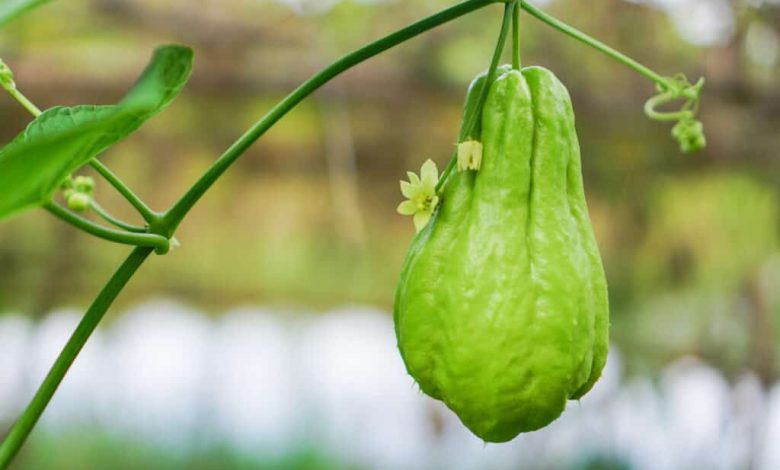
Very good to all Agrohuerters. As many of you know, Lucía and myself are walking around China visiting new urban gardens and discovering their way of integrating them into cities. Well, recently we visited an agricultural research center, there they had many different crops for us that I will bring you little by little… One of the first that caught my attention is this kind of green pepper, paler in color and less weevil, the chayote.
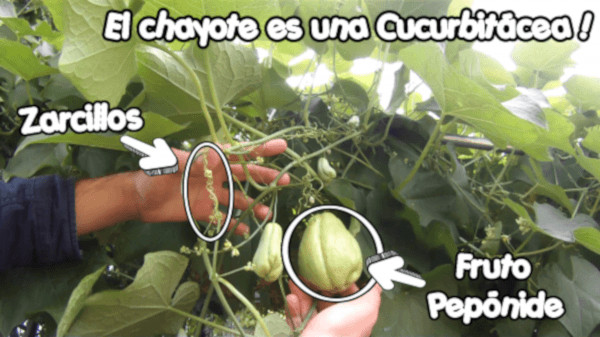
What is Chayote?: characteristics
With my little Chinese I was able to discover that they call it here: fó shou gua, translated into English as: «Buddha’s hand melon «… After a simple search I discovered that it was not only Chayote but that it is a well-known crop throughout South America, called in a thousand ways and cooked in a thousand ways…
I feel ashamed before all our readers on the other side of the Atlantic for not knowing about it… And I find it curious that, although this crop is not widely known in Spain, I have to discover it in China, no less… Comics aside, we are going to discover how to cultivate this Chinese gourd in our gardens.
The chayotera (Sechium edule) is nothing more than a cucurbit, like cucumbers, melons or watermelons … As a good cucurbit, it climbs and has tendrils on the cauline stems, so its growth will have to be guided with some type of trellis. Its leaves are pentagonal and very wide, like those of ivy and its strong stems to support the weight of the fruits.
It is a diclino-monoecious species so it has two types of flowers on the same plant, the male ones are yellow and the female ones are greener. Its roots resemble tubers, and can be cooked and eaten like potatoes.
Chayote fruits and properties
Chayote fruits are light green or whitish yellow, usually weigh 300 to 500 g, are fleshy and have a single seed inside, called a nugget, edible and similar to an almond.
There are many varieties, some have a thorny appearance when young, others are white… Among its most notable attributes, chayote has many beneficial properties for hair, skin and nail care, high content of vitamin C and B 6.
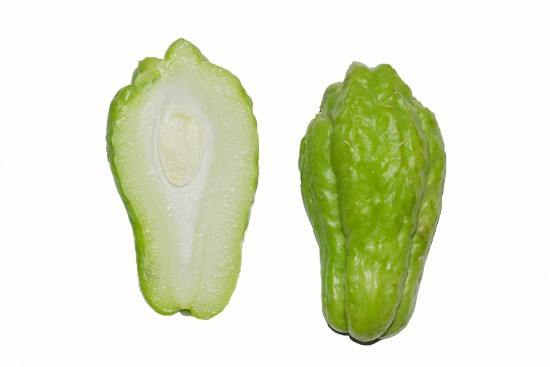
How to Grow Chayote
Having seen what a chayote is, we are going to see how to plant it in our gardens.
Location, soil and climate
The chayotera is native to tropical environments so it requires high humidity, its thermal comfort zone is between 13 and 21ºC but it will withstand higher temperatures well. In Mediterranean climates, it should be oriented towards the east so that it takes advantage of all the solar radiation in the morning and in more humid climates towards the south so that it receives solar radiation all afternoon.
As for soils, the chayote prefers loose, deep, well-drained soils to avoid problems associated with fungi and rich in organic matter, but like all plants… In sandy or very clayey soils, low production, but you will surely get good results. … The stoniness is not a limiting factor for this crop since, as it grows at altitude, an exhaustive preparation of the land is not necessary.
How to plant Chayote
The chayotera is a species with a high germination rate, so we can sow the seeds in a frame of about 6 x 6 m both directly and in furrows, make a seedbed or directly sow the previously germinated chayote, something similar to the case of the potatoes. Another way to plant chayote is to let a fruit ripen at home. After a few days it will develop a tender shoot, when this apical bud is about 20 cm we can transplant it to the ground.
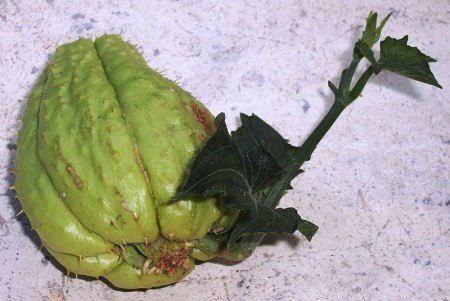
Being a climbing plant, it is convenient to give it some support structure so that it can grow in height and that its own leaves give it shade. To guide the chayotera we can prepare a hurdle similar to tomato or bean stalks, plant it near a tree or a simple wall.
It is not a winter crop, although it could withstand it in temperate zones. Its optimum sowing time is at the beginning of January or the end of December in the greenhouse, since it will take about 5 months to flower. The fruits take about 25 days to mature once the flower has been fertilized, pay attention to their size and that the peduncles have color to be sure.
Care and tips for growing chayote
- The Chayote is a monoecious species that is pollinated by the action of insects (entomophilous pollination), mainly by bees. To favor the pollination of flowers, we can associate this crop with aromatic species that attract beneficial insects to our garden.
- It is convenient to protect it from strong winds in its initial phases so as not to harm its growth.
- Watering this plant is similar to any other cucurbit. At the beginning, abundant watering a week is enough, making them more frequent as temperatures increase. During the ripening of the fruits, irrigation can be somewhat distanced to achieve sweeter fruits, something similar to the case of the Piel de Sapo melon.
- The main pests that affect this crop are the white fly or red spider, nothing that we do not already know how to control. There are other curious diseases that can affect you, which we will see expanded later.
Little more, I hope you are encouraged to grow chayote in your gardens. All the best !

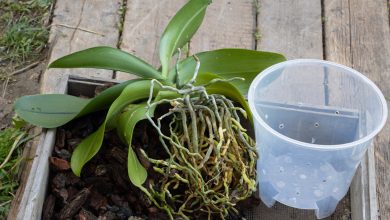

![Photo of How to Plant Arugula: [Cultivation, Water, Fertilizer, Care and More]](https://www.complete-gardening.com/wp-content/uploads/2022/08/how-to-plant-arugula-cultivation-water-fertilizer-care-and-more-390x220.jpg)
